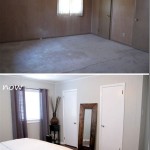Having the perfect color palette for your interior design can make a huge difference in the overall look and feel of your home. With so many colors and options available, it can be overwhelming to decide which colors will work best for your space. With the right guidance and understanding of color theory, you can create a unique and stunning color palette for your interior.
Understanding the Different Types of Color Palettes
The first step to finding the perfect color palette for your interior is understanding the different types of color palettes available. Monochromatic color palettes feature one color in different shades and tints, while analogous color palettes pair colors that are next to each other on the color wheel. Complementary color palettes feature colors that are opposite each other on the color wheel, while triadic color palettes feature three colors spaced evenly apart on the color wheel. Each type of palette can create a different mood and atmosphere in your space.
Choosing a Color Scheme
Once you’ve decided on the type of color palette you’d like to use, it’s time to start choosing your colors. One way to choose colors is to pick a few colors that you’re drawn to and then create a color palette from them. You can also use a color wheel to help you find colors that work together. If you’re feeling overwhelmed by all the options, you can use a pre-made color palette from a home décor magazine or website to help you get started.
Using Color to Create a Mood
In addition to choosing the right hues, you can also use color to create a certain mood in your space. Cool colors like blues, greens, and purples can create a calming atmosphere while warm colors like oranges, reds, and yellows can create a cozy and inviting atmosphere. You can also use different shades of the same color to create a more subtle atmosphere. For example, using shades of blue can create a calming, peaceful atmosphere while using shades of yellow can create an energizing and cheerful atmosphere.
Making the Most of Your Interior Color Palette
Once you have chosen your color palette, it’s time to start incorporating it into your décor. When using a monochromatic color palette, make sure to use different shades and tints of the same color to create depth and contrast in your space. With an analogous color palette, use different textures and patterns to keep the space from looking too flat. For a complementary color palette, consider using accent pieces to bring out the best of each color. Finally, when using a triadic color palette, use one color as the dominant color and the other two as accent colors.















Related Posts








